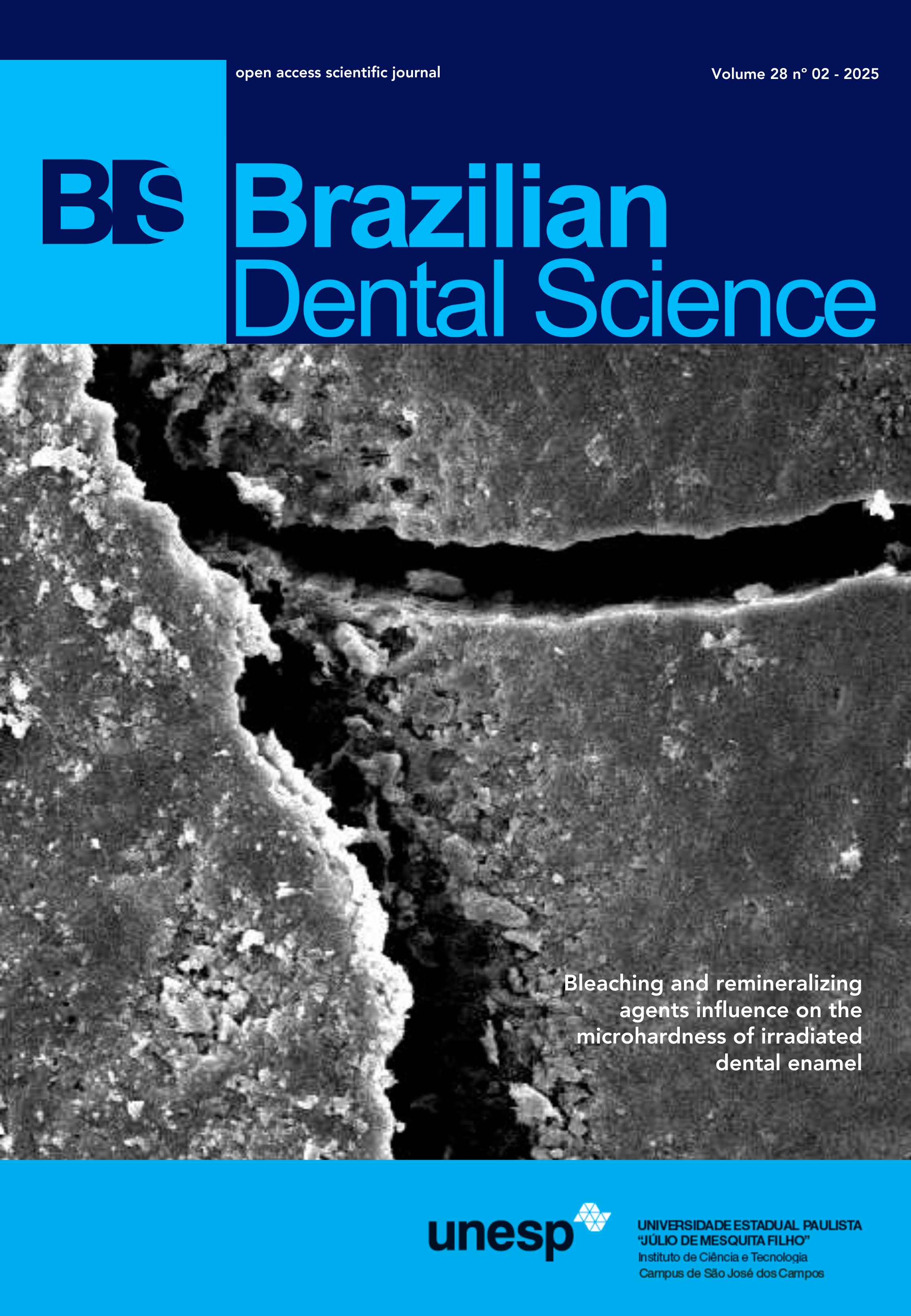Analysis of the relationship between anxiety symptoms and temporomandibular disorder in undergraduate dental students
DOI:
https://doi.org/10.4322/bds.2025.e4501Resumo
Objective: To evaluate, through the application of validated questionnaires, whether the level of anxiety symptoms was associated with the occurrence of painful Temporomandibular Disorders (TMDs) in undergraduate dental students. Material and Methods: To check the occurrence of symptoms of anxiety disorders the GAD-7 (Generalized Anxiety Disorder – 7) questionnaire was applied and to diagnose TMDs the DC/TMD (Diagnostic Criteria for TMDs) was administered to 60 patients. Participants were divided into two groups: control (Co), composed of students without TMD diagnosis (n=30), and experimental group (Exp), composed of students with a TMD diagnosis (n=30). The acquired data underwent descriptive analysis and statistical treatment using chi-square or Fisher’s exact tests. Results: The results showed a significant relationship between moderate and severe anxiety levels with the occurrence of TMDs (p < 0.001), not being related to a specific type of these disorders (muscular and/or joint) (p = 0.071). Regarding sex, it was observed that it does not influence the occurrence of TMDs (p = 0.778). However, sex was related to anxiety levels (p < 0.001), with males in our study being associated with moderate and severe levels of anxiety symptoms. Conclusion: It was concluded that anxiety is associated with the occurrence of painful TMDs in dental students, with moderate and severe levels of anxiety symptoms being more prevalent in individuals with TMD.
KEYWORDS
Anxiety; Dentistry students; Orofacial pain; Stress; Temporomandibular Joint Dysfunction Syndrome.
Downloads
Downloads
Publicado
Como Citar
Edição
Seção
Licença
TRANSFERÊNCIA DE DIREITOS AUTORAIS E DECLARAÇÃO DE RESPONSABILIDADE
Toda a propriedade de direitos autorais do artigo "____________________________________________________________________" é transferido do autor(es) para a CIÊNCIA ODONTOLÓGICA BRASILEIRA, no caso do trabalho ser publicado. O artigo não foi publicado em outro lugar e não foi submetido simultaneamente para publicação em outra revista.
Vimos por meio deste, atestar que trabalho é original e não apresenta dados manipulados, fraude ou plágio. Fizemos contribuição científica significativa para o estudo e estamos cientes dos dados apresentados e de acordo com a versão final do artigo. Assumimos total responsabilidade pelos aspectos éticos do estudo.
Este texto deve ser impresso e assinado por todos os autores. A versão digitalizada deverá ser apresentada como arquivo suplementar durante o processo de submissão.




























